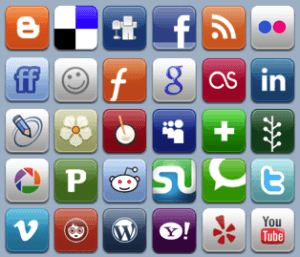Social Media: “The So Called Fad”
Some executives still maintain that social media is a fad. The boom has even been compared to the Internet bubble of the late 1990s. There’s some validity to this comparison, but people have forgotten the extremes of the early Internet investment frenzy, when companies like Webvan were able to raise $1 billion for a service that was never actually launched. In comparison to Web 1.0, the Web 2.0 financial bubble has been tiny.
 Social Media: A Significant Shift
Social Media: A Significant Shift
There is also a lot more evidence this time around that people’s information consumption habits have changed significantly and permanently. The next time you hear the “fad” charge, cite statistics about the growth of new media and the decline of the old. The evidence is overwhelming that traditional channels are producing poorer and poorer returns for marketers as mainstream media fades in importance.
- Newspaper advertising revenues totaled about $43 billion in 2007, which is about 20% lower on an inflation-adjusted basis than 1997 levels. U.S. newspaper circulation is at the same level it was in 1946, when the population was half as large.
- Television advertising is being zapped by a combination of the Internet and the digital video recorder (DVR). Jupiter Research estimated that $12 billion worth of television advertising was blown away away by TiVo and similar devices in 2007. Accenture has estimated that the cost to advertisers it actually twice that high.
- The Ketchum public relations firm and the University of Southern California Annenberg Strategic Public Relations Center found in 2007 that consumer confidence in nearly all media fell from the year before.
- The overall trend was summed up by Paul Woidke, vice president of Comcast Spotlight: “Ad dollars are leaving the cable, broadcast TV and newspaper business at a rate of roughly $5 million per day.”
Meanwhile, the gold rush is on for online advertising:
- Internet ad spending surpassed newspaper advertising to become the nation’s leading ad medium in 2011. Online ad spending will totaled over $6o billion that year.
- Internet advertising spending in the U.S. eclipsed radio and magazines in 2009.
- Spending on word-of-mouth advertising was $981 million in 2006 and grew at a compounded annual rate of 30% through 2010, according to PQ Media.
- A Deloitte survey found that 62% of the U.S. consumers read consumer-generated online reviews, 98% of them believe those reviews are reliable and 80% of them say customer reviews have affected their buying intentions.
Social Media: Entertainment Trends
So the social media spending trends are pretty clear. But what happens when the current generation of teenagers moves into the workforce? That’s when change really kicks in:
- On average, teens spend 60% less time watching TV and 600% more time online than their parents, according to the Arthur W. Page report.
- A total of 141 million U.S. Internet users collectively watched more than 10 billion videos in December, 2007, which grew to 800 million unique visitors per month with over 1 Trillion views in 2012.
- The Facebook core 18-24 year old segment is now growing the fastest at 74% year on year. Almost 72% of all US internet users are on now Facebook
- Over 700 Billion minutes a month are spent on Facebook, 20 million applications are installed per day and over 250 million people interact with Facebook from outside the official website on a monthly basis, across 2 million websites.
The numbers cited above are just a fraction of the statistical evidence that online marketing is overwhelming traditional media in effectiveness and business spending intentions. With all this evidence, you’d think that marketers would be rushing to invest in social media campaigns. You would be wrong: Despite Google’s findings that Americans now spend as much time online as they do watching TV, marketers still spend more than three times as many advertising dollars on traditional broadcast.
Why the disconnect between business leaders’ positive perception of social media and their tepid spending plans? The economy is one factor, but I believe there are several explanations:
Social media is still new and the sheer pace of change has paralyzed investment. In October, 2006, Facebook was almost unknown and YouTube was so new that it merited slight discussion. Over the next 12 months, Facebook exploded to more than 50 million members and a $15 billion market value. YouTube became a cultural icon. Social networks sprang up by the hundreds. This dizzying pace of change has prompted many marketers to sit on the sidelines until some winners emerge.
Social media is cheap. With full campaigns costing less than a single 30-second TV spot, even an aggressive pilot program may amount to a rounding error on a large firm’s marketing budget.
Politics. Even the best-considered social media marketing strategy may be derailed by a CEO who likes seeing his ads on TV during a golf tournament. Demographically, the people who are mostly likely to lead corporations are also the least likely to be active Internet users. Skepticism and lack of knowledge are powerful impediments to change.
Many marketers measure their importance and influence by the size of their budgets. Social media marketing campaigns are so cost-efficient that marketers may actually see their budgets – and their status – fall over time. While this doesn’t make much sense, it is a fact of corporate life. This is just a sampling of the abundant evidence that online marketing is displacing traditional marketing with stunning speed. Social media will capture a growing share of the online dollars.




















